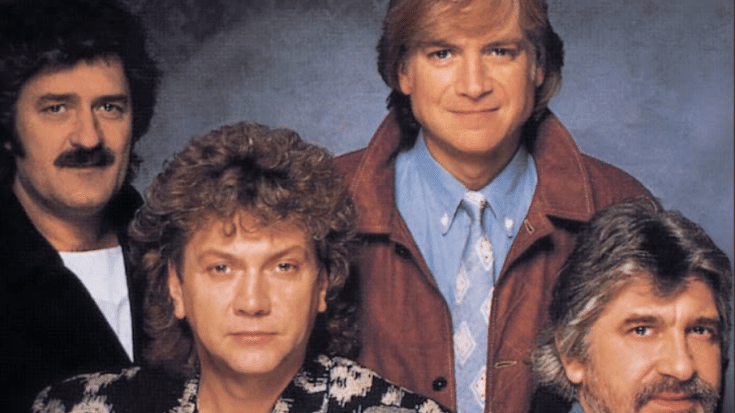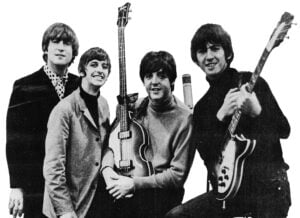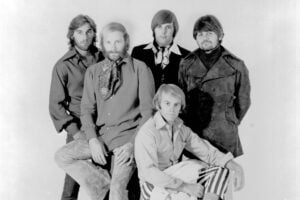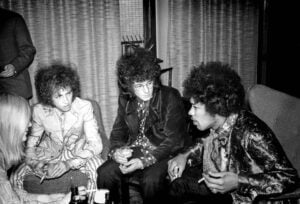8 Overlooked Classic Rock Concept Albums That Will Blow Your Mind

via The Moody Blues / YouTube
As the curtains of rock’s grand amphitheater draw open, some albums strike a chord that resonates through time more vividly than others. A concept album does more than just collect songs; it weaves them together into a narrative, a theme, or a unified expression of an artist’s vision. Below are eight concept albums that not only illustrate the storytelling power of music but also stand as towering achievements in the rock genre.
Frank Zappa — Joe’s Garage (1979)
Frank Zappa’s “Joe’s Garage” starts off as a humorous tale in its 1979 release, depicting the life and times of a typical garage band. The album’s journey stretches from these humble beginnings into a commentary on societal control and the often bizarre twists of fate that life can bring. Zappa is on full display with his biting wit and musically adventurous spirit, delivering an experience that’s as challenging as it is entertaining. Coupled with the artist’s guitar wizardry, the release of “Joe’s Garage” blurs the line between satire and sophisticated commentary, proving that rock can harbor a sharp intellectual edge while still delivering the goods.
Rush — Clockwork Angels (2012)
Canadian trio Rush returned to their conceptual roots with the 2012 release of “Clockwork Angels,” ending their studio album career on an adventurous note. Fans who had longed for another conceptual leap like their 1976 album “2112” found their patience richly rewarded. “Clockwork Angels” presents a textured tapestry of steampunk imagery and philosophical musings, coupled with musical escapades only Rush could perform. This album isn’t just a revisitation of the band’s conceptual strengths—it’s a new peak, proving that even in the waning years of a long career, there’s still room for innovation.
Jethro Tull — Thick As A Brick (1972)
“Thick As A Brick” by Jethro Tull, released in 1972, broke the mold with its singular musical journey—spread over two sides of an LP, that captures the imagination as entirely as a full-fledged novel. Written to music is an epic poem by a fictitious child, offering a wry critique of British society and the education system through a tapestry of folk and progressive rock. Even the album’s packaging was an artful construct, presented as if it were a newspaper narrative about the poem’s young author. Ian Anderson and the band engineered an album experience so immersive that, even decades later, its follow-up in 2012 met with significant acclaim, boldly continuing the story.
The Moody Blues — In Search Of The Lost Chord (1968)
The late 1960s music scene was already rich with experimentation when The Moody Blues delivered “In Search Of The Lost Chord,” an album less driven by a linear story and more by thematic exploration. Touching on various aspects of spiritual discovery and consciousness, the band takes listeners through a mélange of musical styles. With each track serving as a layer, the album delves into meditation, the psychedelic experience, and the power of love, creating a body of work reflective of the era’s soul-searching zeitgeist.
Pink Floyd — The Dark Side of the Moon (1973)
Pink Floyd’s seminal work “The Dark Side of the Moon” turns an introspective lens on the concept of mental health and the nature of human experience. It remains a profound reflection on the shadowy corners of the mind, eloquently portrayed through the medium of sound. The album’s genius lies not only in its cohesive structure—meticulously perfected through extensive live performance—but also in its emotive range, encapsulating the essence of shared human experience. Such is the album’s universality that its narratives of anxiety, longing, and existential doubt continue to resonate with new listeners.
The Alan Parsons Project — I Robot (1977)
In 1977, “I Robot” by The Alan Parsons Project transcended its science fiction inspirations to ponder the human condition. With songs penned mainly by Parsons’ late collaborator Eric Woolfson, the album examines individuality and the search for meaning amidst the rise of technology. The standout track ‘Breakdown’ features one of Allan Clarke’s most powerful vocal performances, driving home the raw emotional undercurrents that course through the album’s grand sonic architecture.
Genesis — The Lamb Lies Down On Broadway (1974)
Genesis took listeners on a surreal adventure with “The Lamb Lies Down on Broadway,” released in 1974. Narrating a New York City-based story with a melody-driven vehicle, frontman Peter Gabriel drew on a treasure trove of imaginative scenarios and intricate instrumentation. Gabriel’s lyrical inventiveness coalesced with the band’s sonic prowess to render a timeless creation. Not only did it tell a captivating story, but it also concluded with an ending that could only come from the most playful corners of rock.
Rick Wakeman: The Six Wives Of Henry VIII (1973)
In the later years of his career, Rick Wakeman’s approach to concept albums often included elaborate costumes, engaging narrations, and even genuine ice skating rinks to bring his visions to life. However, his work on “The Six Wives of Henry VIII” breaks the mold by eloquently telling its story without uttering a single word. Supported by an outstanding band comprised equally of members from Yes and Strawbs, along with his virtuosic keyboard prowess, Wakeman crafts a narrative that is as dramatically rich and quintessentially British as the historical subject it explores.













